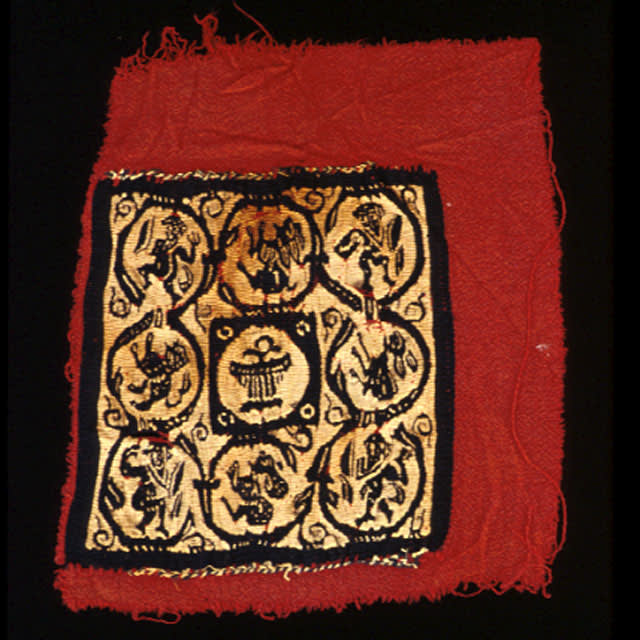Late Antique Coptic Textile Fragment, 4th Century CE - 7th Century CE
Textile
7.5 x 8.5
PF.2105
For centuries, the native weavers of Egypt were famous for the richness of their work. Using intricate patterns and vivid colors, Coptic weavers created masterpieces of textile art. Coptic textiles,...
For centuries, the native weavers of Egypt were famous for the richness of their work. Using intricate patterns and vivid colors, Coptic weavers created masterpieces of textile art. Coptic textiles, used for rugs, wall hangings and clothing appliques, were exported throughout the Roman and Byzantine empires. However, the finest surviving examples come from Egypt itself, where a dry climate has preserved the delicate fabric. Intimate in scale, yet monumental in vision, these woven pictures speak of a world alive with color and movement. This magnificent fragment, in an excellent state of preservation, was probably the central panel on a linen tunic. It has nine roundels of intertwined vines. In the central space is a plant growing in an urn, while the corners are filled with four swirling dancers. The other panels depict animals native to the Egyptian landscape. Combining abstract design with naturalistic subject matter, this splendid piece epitomizes the finest in Coptic weaving of the Late Roman period.
Literature
V1
